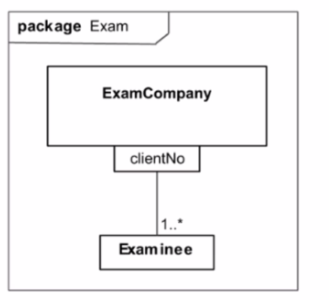OMG Certified UML Professional 2 (OCUP 2) - Advanced Level OMG-OCUP2-ADV300 Exam Practice Test
Choose the correct answer:
Which capability Is provided by the Profile mechanism?
Answer : C
The Profile mechanism in UML provides the capability to adapt existing metamodel elements for specific purposes. Profiles allow modelers to extend the standard UML metamodel with additional semantics by defining stereotypes, tagged values, and constraints that are specific to a particular domain, platform, or methodology. This means that profiles tailor the existing UML metamodel elements to create domain-specific models without changing the underlying metamodel itself. This adaptation mechanism is described in the UML 2.x Superstructure and Infrastructure Specifications, which detail how profiles can be used to customize the UML for particular domains or purposes.
Choose the correct answer:
Can State Machine Events have Features?
Answer : C
State Machine Events in UML are triggers for transitions and do not classify as objects or classifiers; thus they do not inherently have features:
A . Incorrect, because State Machine Events are not treated as classifiers with features.
B . Incorrect, though it hints at an extended use case, State Machine Events do not extend classifiers in standard UML usage.
C . Correct, State Machine Events are not Classifiers and therefore cannot have features such as properties or operations.
D . Incorrect, because UML State Machines certainly have an Event concept, but these Events are not classified as having features.
UML Specification: State Machine chapter, specifically sections discussing the nature of events and triggers.
Further insights can be found in the event and trigger management sections of the UML 2.5 Documentation.
Choose the correct answer:
Which UML element specifies a set of formal parameters that will be substituted by actual parameters?
Answer : B
A template signature in UML specifies a set of formal parameters that can be substituted by actual parameters when a template is instantiated. This template signature is part of a templateable element, which is the element that can be parameterized using the template mechanism in UML. The template signature defines the formal template parameters that will be replaced by actual values or types when a bound element is created from the template. This concept is detailed in the UML 2.x Superstructure Specification, particularly in the sections describing templates and how they are used to create reusable and customizable model elements.
Choose the correct answer:
Which feature of a UML model element could NOT be adapted by a Stereotype?
Answer : C
Choose the correct answer:
Consider the following diagram:

What kind of model element is chentNo?
Answer : B
In the context of the diagram, 'clientNo' is placed next to the association line between 'ExamCompany' and 'Examinee,' which indicates that 'clientNo' is a qualifier of the association. In UML, a qualifier is used to refine the association between two classes by providing a way to access linked objects based on some attribute value. The qualifier essentially acts as a key in an associative array or map, allowing access to instances of the associated class. In this case, 'clientNo' is likely used to uniquely identify examinees associated with an exam company. This use of qualifiers is detailed in the UML 2.x Superstructure Specification, which describes how qualifiers can be used to specify refined access to linked objects within an association.
Choose the correct answer:
What is a reason for fUML lo be compact?
Choose the correct answer:
What is true about the use of a Template Classifier to specify the Type of a Typed Element?
Answer : E
When a template classifier is used to specify the type of a typed element, the actual parameters for the template classifier's formal parameters must be provided by a set of bound elements. This means that for a template classifier to be used as a type, there must be a corresponding binding that specifies what elements are used as arguments for its template parameters. This allows the typed element to have a concrete type that is a specific instantiation of the template classifier with particular values for its template parameters. This use of template classifiers is described in the UML 2.x Superstructure Specification, which details how template binding works to create specific instances of template classifiers.